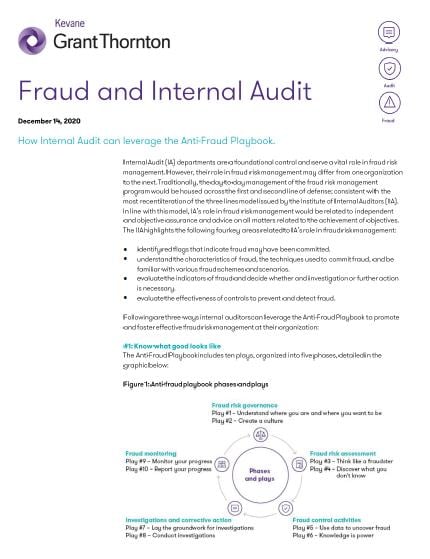-
Financial statements audits
Financial statement audits
-
Compliance audits
Compliance audits
-
Compilations and reviews
Compilations and audit
-
Agreed-upon procedures
Agreed-upon procedures
-
Corporate and business tax
Our trusted teams can prepare corporate tax files and ruling requests, support you with deferrals, accounting procedures and legitimate tax benefits.
-
International tax
Our teams have in-depth knowledge of the relationship between domestic and international tax laws.
-
Tax compliance
Business Tax
-
Individual taxes
Individual taxes
-
Estate and succession planning
Estate and succession planning
-
Global mobility services
Through our global organisation of member firms, we support both companies and individuals, providing insightful solutions to minimise the tax burden for both parties.
-
Sales and use tax and indirect taxes
SUT/ VAT & indirect taxes
-
Tax incentives program
Tax incentives program
-
Transfer Pricing Study
The laws surrounding transfer pricing are becoming ever more complex, as tax affairs of multinational companies are facing scrutiny from media, regulators and the public

-
Business consulting
Our business consulting services can help you improve your operational performance and productivity, adding value throughout your growth life cycle.
-
Forensic and investigative services
At Grant Thornton, we have a wealth of knowledge in forensic services and can support you with issues such as dispute resolution, fraud and insurance claims.
-
Fraud and investigations
The commercial landscape is changing fast. An ever more regulated environment means organizations today must adopt stringent governance and compliance processes. As business has become global, organizations need to adapt to deal with multi-jurisdictional investigations, litigation, and dispute resolution, address the threat of cyber-attack and at the same time protect the organization’s value.
-
Dispute resolutions
Our independent experts are experienced in advising on civil and criminal matters involving contract breaches, partnership disputes, auditor negligence, shareholder disputes and company valuations, disputes for corporates, the public sector and individuals. We act in all forms of dispute resolution, including litigation, arbitration, and mediation.
-
Business risk services
We can help you identify, understand and manage potential risks to safeguard your business and comply with regulatory requirements.
-
Internal audit
We work with our clients to assess their corporate level risk, identify areas of greatest risk and develop appropriate work plans and audit programs to mitigate these risks.
-
Service organization reports
As a service organization, you know how important it is to produce a report for your customers and their auditors that instills confidence and enhances their trust in your services. Grant Thornton Advisory professionals can help you determine which report(s) will satisfy your customers’ needs and provide relevant information to your customers and customers’ auditors that will be a business benefit to you.
-
Transactional advisory services
Transactions are significant events in the life of a business – a successful deal that can have a lasting impact on the future shape of the organizations involved. Because the stakes are high for both buyers and sellers, experience, determination and pragmatism are required to bring deals safely through to conclusion.
-
Mergers and acquisitions
Globalization and company growth ambitions are driving an increase in M&A activity worldwide as businesses look to establish a footprint in countries beyond their own. Even within their own regions, many businesses feel the pressure to acquire in order to establish a strategic presence in new markets, such as those being created by rapid technological innovation.
-
Valuations
We can support you throughout the transaction process – helping achieve the best possible outcome at the point of the transaction and in the longer term.
-
Recovery and reorganization
We provide a wide range of services to recovery and reorganisation professionals, companies and their stakeholders.
Internal Audit (IA) departments are a foundational control and serve a vital role in fraud risk management. However, their role in fraud risk management may differ from one organization to the next. Traditionally, the day-to-day management of the fraud risk management program would be housed across the first and second line of defense; consistent with the most recent iteration of the three lines model issued by the Institute of Internal Auditors (IIA). In line with this model, IA’s role in fraud risk management would be related to independent and objective assurance and advice on all matters related to the achievement of objectives. The IIA highlights the following four key areas related to IA’s role in fraud risk management:
- identify red flags that indicate fraud may have been committed.
- understand the characteristics of fraud, the techniques used to commit fraud, and be familiar with various fraud schemes and scenarios.
- evaluate the indicators of fraud and decide whether and investigation or further action is necessary.
- evaluate the effectiveness of controls to prevent and detect fraud.
Following are three ways internal auditors can leverage the Anti-Fraud Playbook to promote and foster effective fraud risk management at their organization:
#1: Know what good looks like
The Anti-Fraud Playbook includes ten plays, organized into five phases, detailed in the graphic below:
Figure 1: Anti-fraud playbook phases and plays

These phases and the underlying plays are the building blocks of an effective fraud risk management program. Whether you are beginning your anti-fraud journey or are looking to enhance current fraud risk management practices, the Anti-Fraud Playbook provides a benchmark for what a good fraud risk management program looks like. Fraud risk management should be tailored to the unique needs of the organization and its individual business units. Not every organization or business unit requires the same level of fraud risk management.
#2: Learn to think like a fraudster
To understand your organization’s fraud risk landscape and identify red flags, internal auditors first must define what type of fraud they should be looking for. Brainstorm fraud scenarios that are specific to your organization’s processes and controls. If someone wanted to commit fraud, how could they do it? What processes or controls would they circumvent? Who would be most likely to perpetrate the fraud and why? Consider both internal and external fraud and think beyond just financial losses.
Thinking like a fraudster can help internal auditors identify risks and better evaluate and align controls to them. Once the internal auditor has a clear picture of the risk landscape, they can deploy analytics to target specific risks. This can help facilitate continuous risk identification and monitoring; further fostering proactive fraud risk management at the organization.
Where fraud has occurred, internal audit should understand how the controls failed and identify opportunities for improvement. It should consider the probability of further errors, fraud, or noncompliance across the organization and reassess the cost of assurance in relation to potential benefits.
#3: Monitor progress
Monitoring and periodic evaluations provide vital insight into the effectiveness of fraud risk management activities and help identify areas for improvement. Business unit owners should be responsible for ongoing monitoring and periodic evaluations that provide vital insight into the effectiveness of their fraud risk management activities.
Internal auditors can help ensure monitoring and evaluations are effective by focusing on two key questions:
- Do monitoring and evaluation activities cover the full spectrum of fraud risk management activities? Internal audit should ensure that the business focuses on outcomes versus outputs — focus on the effectiveness of fraud risk management activities rather than the number of activities taking place.
- Are the results of monitoring and evaluations being used to drive continuous improvement? Let’s say the business surveyed employees within a specific function to determine the effectiveness of recent antifraud training and the results were lower than expected. Internal audit could push the business to improve the training to achieve the desired outcome.
IA provides the independent, objective assurance that your organization needs and provides the fraud risk management program and activities needed to combat current and emerging fraud threats.
Source: Grant Thornton library articles

